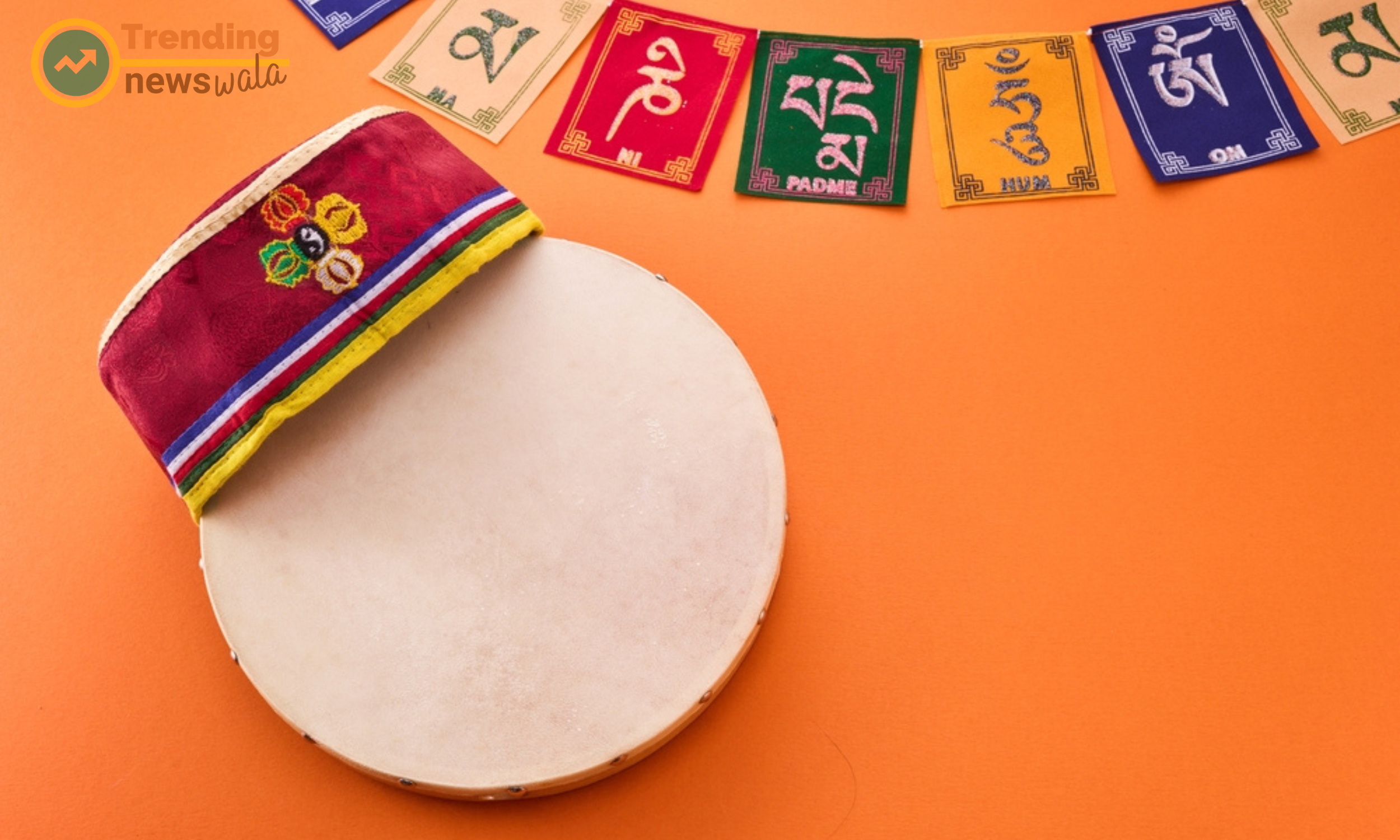Losar, the Tibetan New Year, is a time of profound significance for Tibetan and Himalayan communities worldwide. Rooted in ancient traditions and steeped in cultural heritage, Losar is a vibrant celebration that marks the beginning of the Tibetan lunar calendar. From joyful gatherings to sacred rituals, Losar festivities embody the spirit of renewal, hope, and spiritual awakening. Here are ten enchanting ways to immerse yourself in the magic of Losar:
In essence, Losar is a celebration of renewal, resilience, and the indomitable spirit of the Tibetan people. By embracing these ten enchanting ways to celebrate Losar, you can immerse yourself in the rich tapestry of Tibetan culture, deepen your spiritual practice, and welcome the New Year with joy, gratitude, and optimism. Losar Tashi Delek!
Rituals of Purification and Cleansing:
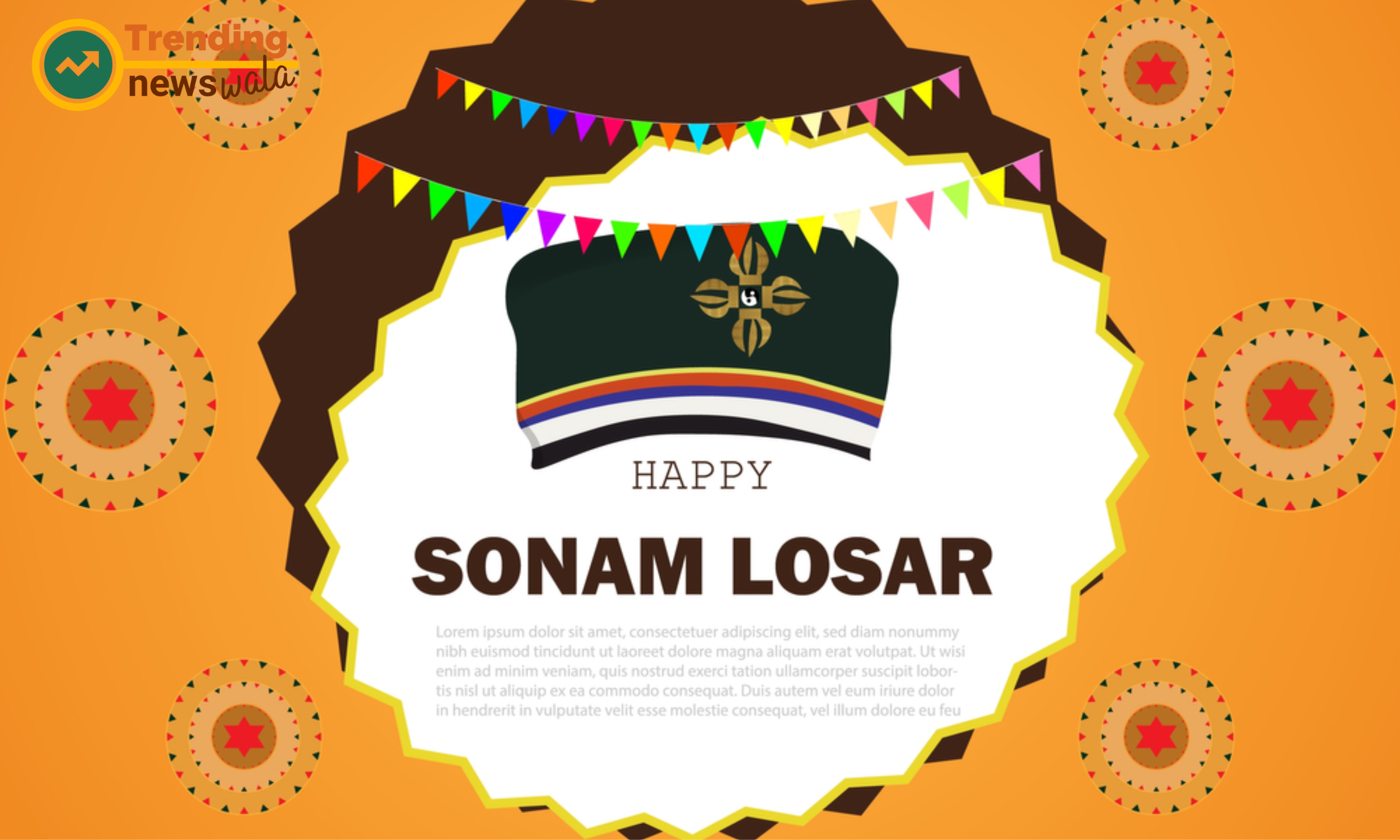
Losar begins with rituals of purification and cleansing aimed at dispelling negativity and ushering in positive energy for the New Year. Tibetan households engage in thorough cleaning, removing clutter, and purifying their surroundings. Burning juniper branches (sang) is a common practice to purify homes and dispel negative influences.
- Losar, the Tibetan New Year, is a time of profound spiritual significance, marked by ancient rituals that symbolize purification, renewal, and the ushering in of positive energy for the coming year. At the heart of Losar celebrations are rituals of purification and cleansing, which hold deep spiritual significance for Tibetan and Himalayan communities worldwide. Here, we explore the top ten Losar rituals of purification and cleansing:
- Thorough Cleaning of Homes:Losar preparations begin with thorough cleaning of homes, symbolizing the removal of physical and spiritual impurities accumulated over the past year. Every nook and corner is meticulously cleaned to create a fresh and auspicious environment for the New Year.
- Burning of Juniper Branches (Sang):A central purification ritual of Losar involves burning juniper branches, known as "sang," to dispel negative energies and purify the atmosphere. The fragrant smoke of burning juniper is believed to purify the environment and ward off evil spirits.
- Offering Barley Flour to Sacred Fires:Families gather around sacred fires, known as "me," to offer barley flour (tsampa) as a symbolic offering. This ritual is believed to appease local deities and spirits, inviting their blessings for prosperity and well-being in the coming year.
- Making Butter Sculptures (Torma):Another traditional Losar practice is the creation of elaborate butter sculptures, known as "torma." These intricate sculptures, often depicting auspicious symbols or deities, are meticulously crafted as offerings to spiritual beings.
- Hanging Prayer Flags:Tibetan prayer flags, or "lungta," are hung outside homes and monasteries as part of Losar preparations. The colorful flags, inscribed with prayers and mantras, are believed to purify the environment and spread blessings with each flutter in the wind.
- Offering Water and Food to Spirits:Offerings of water, food, and other symbolic items are made to local spirits and deities during Losar rituals. This gesture of reverence and gratitude is believed to ensure the protection and benevolence of spiritual beings in the New Year.
- Lighting Butter Lamps:Lighting butter lamps, or "changpu," is a sacred practice during Losar celebrations. These traditional lamps, fueled by clarified butter, symbolize the dispelling of darkness and the illumination of wisdom and compassion.
- Circumambulation of Sacred Sites:Devotees perform circumambulations, or "kora," around sacred sites, stupas, and monasteries as part of Losar rituals. This act of walking in a clockwise direction is believed to accumulate merit and purify negative karma.
- Offering Incense and Flowers:Offerings of incense, flowers, and other fragrant substances are made at home altars and in monasteries during Losar ceremonies. The sweet aroma of incense is believed to purify the senses and create a conducive atmosphere for meditation and prayer.
- Seeking Blessings from Lamas and Monks:Losar rituals often involve seeking blessings and teachings from lamas and monks, who perform special prayers and rituals to invoke blessings for the community. Devotees receive blessings and teachings, reaffirming their commitment to spiritual practice in the New Year.
- the rituals of purification and cleansing observed during Losar are deeply rooted in Tibetan Buddhist tradition, serving to purify the mind, body, and spirit in preparation for the New Year. By embracing these sacred rituals, Tibetan and Himalayan communities reaffirm their spiritual values, strengthen community bonds, and usher in a sense of renewal and hope for the year ahead.
Offerings and Prayers:
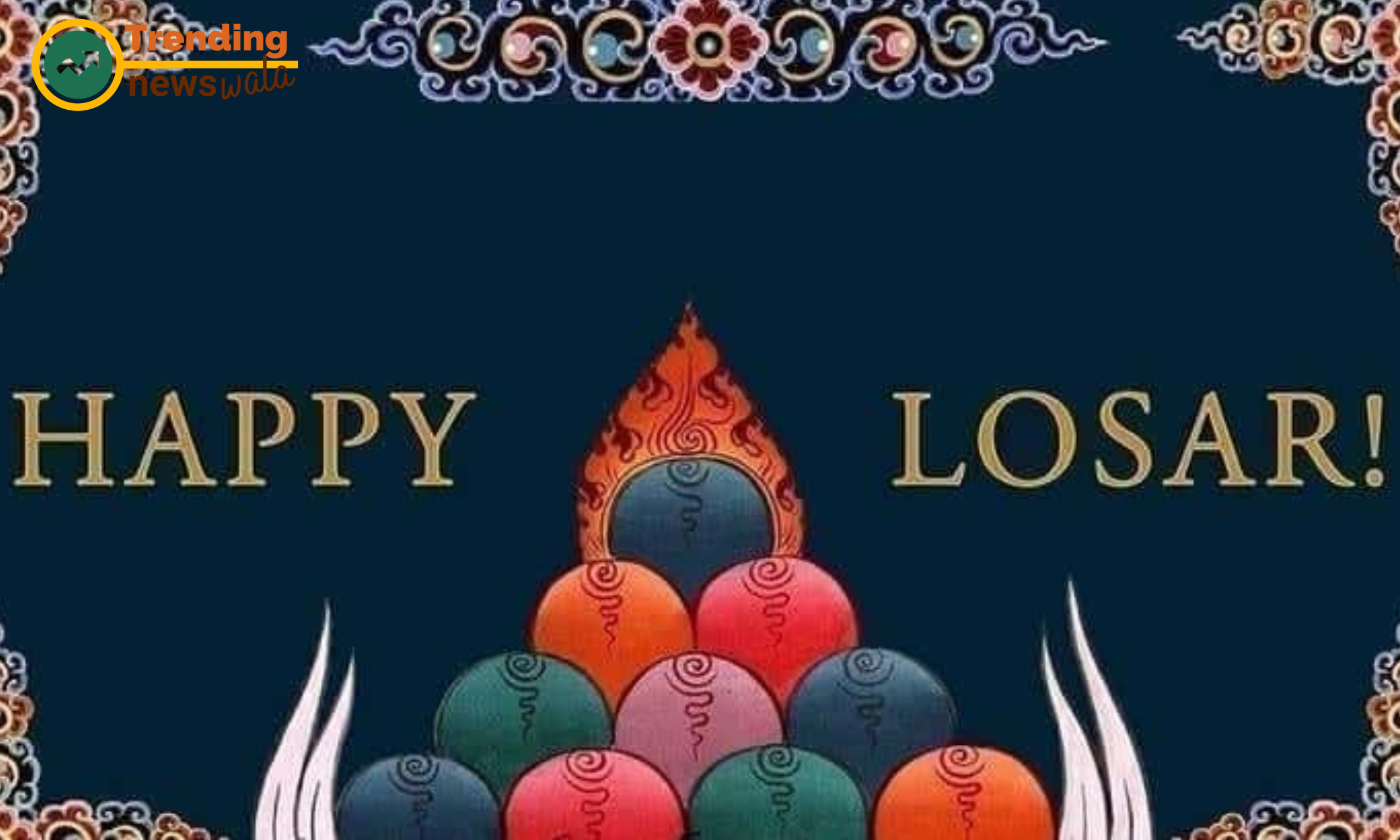
Central to Losar celebrations are offerings and prayers made to seek blessings for the year ahead. Families gather at monasteries and temples to offer prayers, light butter lamps, and engage in chanting ceremonies. Devotees offer barley flour (tsampa) to sacred fires and perform prostrations as acts of devotion.
- Losar, the Tibetan New Year, is a time of profound spiritual significance, characterized by ancient rituals and ceremonies that symbolize gratitude, reverence, and the seeking of blessings for the coming year. Among the most central aspects of Losar celebrations are offerings and prayers, which play a crucial role in invoking blessings, purifying negative energies, and fostering spiritual well-being. Here, we explore the top ten Losar offerings and prayers that hold deep significance for Tibetan and Himalayan communities worldwide:
- Butter Lamp Offerings:Lighting butter lamps, or "changpu," is a sacred practice during Losar celebrations. Devotees offer butter lamps to Buddhist deities and spiritual beings, symbolizing the illumination of wisdom, compassion, and enlightenment.
- Tsok Offerings:Tsok offerings, also known as "ganachakra," involve the offering of a variety of foods, fruits, and beverages to spiritual beings. These offerings symbolize the accumulation of merit and the expression of gratitude for blessings received.
- Water Bowl Offerings:Offering water bowls, or "torma," is a traditional Tibetan Buddhist practice during Losar ceremonies. Devotees arrange water bowls adorned with flowers and other offerings as a gesture of reverence and devotion.
- Fruit Offerings:Fruits hold symbolic significance in Tibetan culture and are often offered during Losar prayers and ceremonies. Fresh fruits, such as oranges, apples, and bananas, are arranged as offerings to deities and spiritual masters.
- Incense Offerings:Burning incense, or "sang," is a common practice during Losar rituals. The fragrant aroma of incense is believed to purify the environment, enhance concentration, and create a conducive atmosphere for meditation and prayer.
- Offering of Khataks:Khataks, or white ceremonial scarves, are offered as tokens of respect, gratitude, and goodwill during Losar celebrations. Khataks symbolize purity, sincerity, and the extension of blessings and good wishes to others.
- Offering of Tibetan Butter Tea (Po Cha):Tibetan butter tea, known as "po cha," is traditionally offered to guests during Losar gatherings. This rich and creamy beverage symbolizes hospitality, warmth, and the sharing of blessings with others.
- Prostration Offerings:Devotees perform prostrations, or "chagtsal," as acts of reverence and devotion during Losar prayers and ceremonies. Prostrations symbolize humility, submission, and the aspiration to purify negative karma.
- Offerings of Tsampa:Tsampa, roasted barley flour, holds great significance in Tibetan culture and is often offered during Losar rituals. Tsampa offerings symbolize sustenance, nourishment, and the continuity of spiritual practice.
- Prayer Flag Offerings:Tibetan prayer flags, or "lungta," are offered as symbols of devotion and aspiration during Losar ceremonies. Devotees hang prayer flags inscribed with auspicious prayers and mantras to spread blessings and positive energy.
- the offerings and prayers observed during Losar play a vital role in fostering spiritual connection, gratitude, and blessings for the New Year. By engaging in these sacred practices, Tibetan and Himalayan communities reaffirm their spiritual values, cultivate compassion, and seek the blessings of wisdom and enlightenment for the year ahead.
Decorate with Symbols of Prosperity:

Homes and monasteries are adorned with vibrant decorations and auspicious symbols to welcome the New Year. Intricate designs are crafted from colored sands or powders to create mandalas symbolizing harmony and balance. Traditional Tibetan motifs, prayer flags, and images of Buddhist deities add to the festive ambiance.
- Losar, the Tibetan New Year, is a time of vibrant celebrations, marked by ancient traditions and rich cultural heritage. Among the central aspects of Losar preparations is the adornment of homes and monasteries with symbols of prosperity, abundance, and good fortune. From intricate designs to sacred motifs, decorating with symbols of prosperity sets the stage for a joyous and auspicious start to the New Year. Here, we explore the top ten ways to decorate for Losar with symbols of prosperity:
- Mandalas of Harmony:Mandalas, intricate geometric patterns symbolizing harmony and balance, are commonly crafted during Losar preparations. These elaborate designs, made from colored sands or powders, adorn floors and altars, serving as visual representations of cosmic order and unity.
- Tibetan Buddhist Symbols:Decorate your home with Tibetan Buddhist symbols such as the Eight Auspicious Symbols (Tashi Tagye), the Eternal Knot (Dorje Gyatram), and the Wheel of Dharma (Dharmachakra). These sacred symbols embody spiritual virtues and blessings, inviting auspicious energy into your space.
- Prayer Flags Fluttering in the Wind:Hang traditional Tibetan prayer flags, or "lungta," outside your home to spread blessings and positive energy. Inscribed with prayers and mantras, prayer flags symbolize the invocation of peace, prosperity, and well-being for all beings.
- Images of Buddhist Deities:Display images or statues of Buddhist deities such as Tara, Chenrezig, or Medicine Buddha to invoke their blessings and protection. These sacred images inspire devotion and serve as reminders of compassion, wisdom, and enlightenment.
- Auspicious Colors:Incorporate auspicious colors such as white, gold, red, and green into your decorations. White symbolizes purity and clarity, gold represents wealth and prosperity, red signifies good fortune and vitality, while green embodies growth and renewal.
- Flower Offerings and Garlands:Adorn your home with fresh flowers and garlands as offerings to spiritual beings and deities. Flowers symbolize beauty, abundance, and the impermanence of life, evoking a sense of joy and appreciation for the natural world.
- Rangoli and Tibetan Carpet Designs:Create vibrant rangoli patterns or Tibetan carpet designs using colored powders, grains, or flowers. These intricate designs enhance the festive atmosphere and symbolize prosperity, good luck, and auspicious beginnings.
- Butter Sculptures (Torma):Craft elaborate butter sculptures, or "torma," to adorn your home altar or shrine. These intricately molded sculptures, often depicting auspicious symbols or deities, symbolize the offering of abundance and the accumulation of merit.
- Auspicious Symbols of Prosperity:Decorate your home with symbols of prosperity such as the endless knot, the treasure vase, or the conch shell. These auspicious symbols attract positive energy, abundance, and good fortune into your life.
- Offering Bowls and Ritual Objects:Arrange offering bowls filled with water, grains, fruits, and other symbolic items on your home altar or shrine. Surround them with ritual objects such as incense burners, butter lamps, and ritual cakes to create a sacred space filled with blessings.
- decorating for Losar with symbols of prosperity is a cherished tradition that invites blessings, joy, and abundance into our lives. By adorning our homes with auspicious symbols and sacred motifs, we create a welcoming environment filled with positive energy and goodwill as we usher in the New Year with hope and gratitude.
Feast on Traditional Delicacies:

Losar is a time for feasting on sumptuous Tibetan delicacies and traditional New Year dishes. Families gather to enjoy hearty meals featuring momos (dumplings), thukpa (noodle soup), sha phaley (fried bread stuffed with meat or vegetables), and sweet treats like khapse (deep-fried cookies) and torma (ritual cakes).
- Losar, the Tibetan New Year, is a time of joyous celebration and heartfelt gatherings, where families and communities come together to usher in the coming year with warmth, love, and abundance. Central to Losar festivities is the indulgence in a sumptuous feast of traditional delicacies, each dish rich with symbolism, flavor, and cultural significance. Here, we present the top ten traditional delicacies to savor during the Losar feast:
- Guthuk:Guthuk, a hearty Tibetan soup, takes center stage during Losar celebrations. Made with meat, vegetables, and dumplings, Guthuk is known for its unique ingredient - "twentysomething" - a mix of dough balls stuffed with various fillings, each carrying a symbolic meaning related to the year ahead.
- Momos:No Losar feast is complete without momos, beloved Tibetan dumplings filled with meat or vegetables and steamed or fried to perfection. These delightful parcels of flavor are often enjoyed with a side of spicy dipping sauce, adding an extra kick to the festivities.
- Khapse:Khapse, traditional Tibetan butter cookies, are a staple sweet treat during Losar celebrations. These intricately shaped cookies, fried until golden brown and crispy, symbolize prosperity, and are often exchanged as gifts among family and friends.
- Thukpa:Thukpa, a comforting Tibetan noodle soup, warms the soul during Losar festivities. Made with hand-pulled noodles, vegetables, and aromatic broth, Thukpa is a hearty and satisfying dish enjoyed by all ages.
- Khapsay:Khapsay, crispy fried Tibetan bread, adds a delightful crunch to the Losar feast. These golden-brown delights are often served alongside savory dishes or enjoyed on their own, providing a delicious contrast of textures.
- Shabalay:Shabalay, savory Tibetan pastries stuffed with seasoned meat or vegetables, are a crowd-pleaser at Losar gatherings. These crispy pockets of flavor are perfect for snacking or as part of a larger feast.
- Yak Butter Tea (Po Cha):Yak butter tea, or Po Cha, is a traditional Tibetan beverage enjoyed during Losar celebrations. Made with brewed tea, yak butter, salt, and sometimes milk, Po Cha warms the body and invigorates the spirit on cold winter days.
- Droma Khatsa:Droma Khatsa, Tibetan butter tea cookies, are a sweet indulgence during Losar festivities. These delicate cookies, flavored with the richness of butter tea, are a delightful accompaniment to a cup of hot tea or coffee.
- Tingmo:Tingmo, Tibetan steamed buns, are soft, fluffy, and utterly delicious. These versatile buns can be enjoyed on their own or paired with savory dishes, making them a versatile addition to the Losar feast.
- Tsampa:Tsampa, roasted barley flour, holds a special place in Tibetan cuisine and culture. During Losar, tsampa is often enjoyed mixed with butter tea or milk, creating a nourishing and energizing dish that sustains revelers throughout the festivities.
- the Losar feast is a time-honored tradition that brings families and communities together to celebrate the richness of Tibetan culture, cuisine, and camaraderie. As we gather around the table to savor these traditional delicacies, we not only nourish our bodies but also our spirits, forging bonds of love, gratitude, and kinship that endure throughout the year.
Exchange Greetings and Good Wishes:

Losar is a time for exchanging heartfelt greetings and good wishes with family, friends, and neighbors. The traditional greeting "Tashi Delek" or "Losar Tashi Delek" conveys blessings for a prosperous New Year. Exchanging gifts and offering khatak (white scarves) symbolize friendship, respect, and goodwill.
- Losar, the Tibetan New Year, is a time of joy, renewal, and heartfelt connections. Among the most cherished traditions of Losar celebrations is the exchange of greetings and good wishes, where friends, family, and community members come together to express love, gratitude, and hopes for the coming year. Here, we delve into the top ten ways to exchange greetings and good wishes during the auspicious occasion of Losar:
- Tashi Delek:"Tashi Delek," meaning "auspicious greetings," is a traditional Tibetan greeting exchanged during Losar celebrations. Uttering these words conveys blessings, good fortune, and positive energy to all those around you.
- Losar Tashi Delek Cards:Sending Losar Tashi Delek cards is a cherished tradition among Tibetan families and communities. These beautifully crafted cards feature auspicious symbols, prayers, and heartfelt messages of goodwill for the New Year.
- Face-to-Face Greetings:Embrace the spirit of Losar by greeting friends, family, and neighbors in person. Whether with a warm smile, a heartfelt hug, or a respectful bow, face-to-face greetings foster a sense of connection and camaraderie.
- Virtual Celebrations:In today's digital age, virtual celebrations offer an opportunity to exchange greetings and good wishes with loved ones near and far. Send festive messages, share photos and videos, or join virtual gatherings to spread joy and positivity.
- Traditional Losar Songs and Dances:Singing traditional Losar songs and performing joyful dances is a spirited way to exchange greetings and good wishes. These lively performances infuse celebrations with energy, rhythm, and cultural vibrancy.
- Offering Khataks:Presenting Khataks, traditional Tibetan ceremonial scarves, is a meaningful gesture of respect and goodwill. Offer Khataks to elders, spiritual leaders, and revered guests as a token of gratitude and reverence.
- Prayers and Mantras:Reciting prayers and mantras is a sacred practice during Losar celebrations. Offer prayers for peace, prosperity, and happiness, and chant auspicious mantras to invoke blessings for the New Year.
- Traditional Losar Foods:Sharing traditional Losar foods with loved ones is a delightful way to exchange greetings and good wishes. Invite friends and family to join you for a festive meal, and savor the flavors of the season together.
- Acts of Kindness:Extend greetings and good wishes through acts of kindness and compassion. Offer assistance to those in need, perform charitable deeds, and spread positivity through small acts of generosity.
- Reflecting on Shared Memories:Take time to reflect on shared memories and experiences with loved ones. Reminisce about past celebrations, cherish moments of laughter and joy, and express gratitude for the bonds of friendship and family that enrich your life.
- exchanging greetings and good wishes during Losar is a cherished tradition that fosters love, unity, and goodwill among communities. Whether through heartfelt words, festive gestures, or acts of kindness, the spirit of Losar shines bright as we come together to celebrate the blessings of the New Year.
Cultural Performances and Festivities:
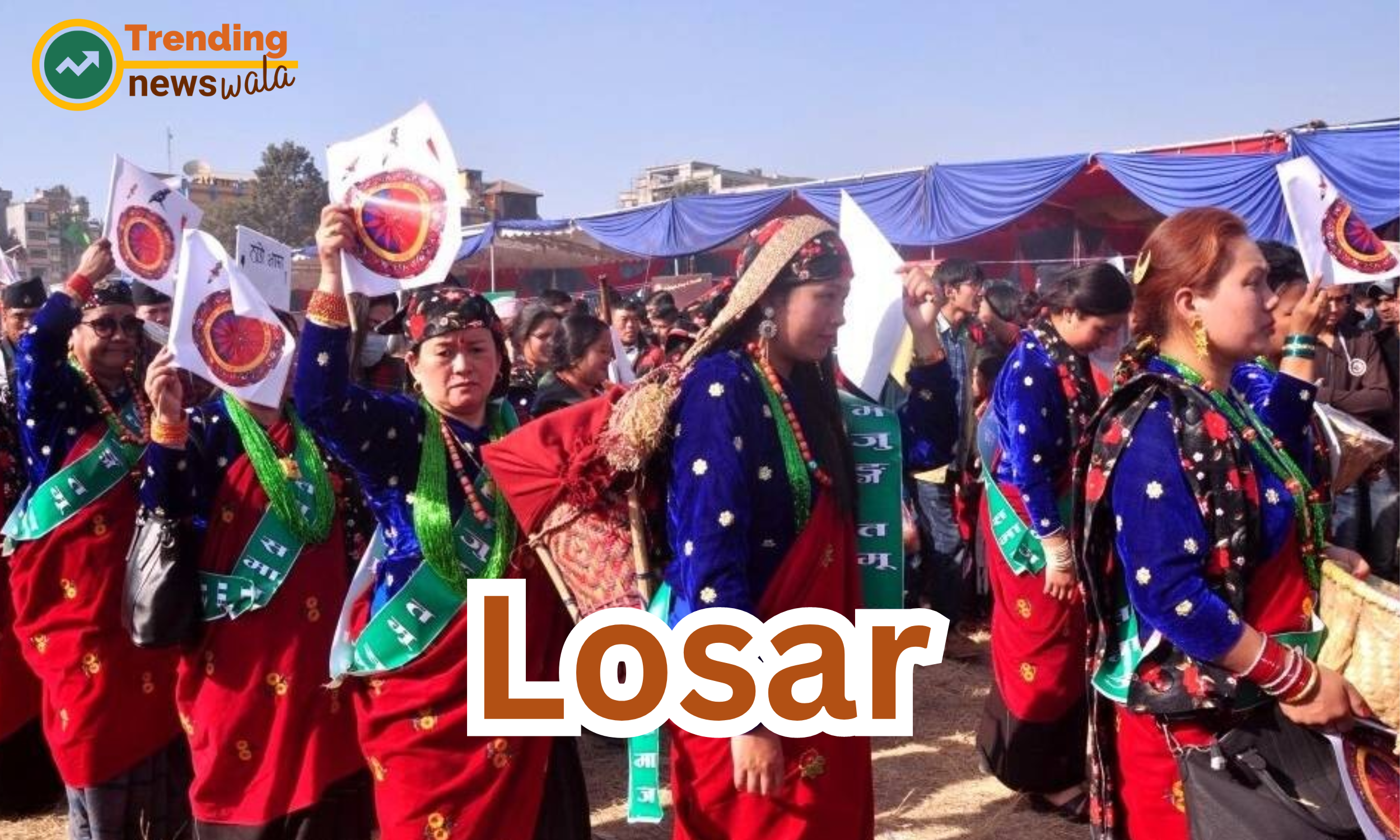
Losar celebrations are enlivened with colorful cultural performances, folk dances, and music concerts. Communities come together to showcase traditional Tibetan dances like the cham dance, lively folk songs, and captivating musical performances. Vibrant parades and processions add to the festive spirit.
- Losar, the Tibetan New Year, is a vibrant and culturally significant occasion marked by an array of traditional performances and festivities. From colorful dances to spirited musical performances, Losar celebrations showcase the rich tapestry of Tibetan culture and heritage. Here, we explore the top ten cultural performances and festivities that add joy and vibrancy to Losar celebrations:
- Cham Dance Performances:Cham dances, sacred masked dances performed by Tibetan Buddhist monks, are a highlight of Losar festivities. These intricate dances depict stories from Tibetan Buddhist mythology and serve as offerings to deities, bringing blessings and protection for the New Year.
- Ache Lhamo (Tibetan Opera):Ache Lhamo, or Tibetan opera, is a traditional form of performing arts that combines music, dance, and drama. During Losar celebrations, colorful performances of Ache Lhamo entertain audiences with tales of heroism, love, and spiritual devotion.
- Yak Dance:The Yak Dance is a lively and energetic performance featuring dancers dressed in elaborate yak costumes. Accompanied by traditional music and chants, the Yak Dance symbolizes the vital role of yaks in Tibetan culture and the importance of harmony with nature.
- Losar Processions:Colorful processions are a common sight during Losar celebrations, with participants dressed in traditional attire and carrying ceremonial objects. These processions weave through streets and monasteries, spreading joy, blessings, and good wishes for the New Year.
- Traditional Folk Songs:Losar festivities are enlivened by the melodious tunes of traditional Tibetan folk songs. These songs, often accompanied by traditional instruments such as the dranyen (Tibetan lute) and damaru (hand drum), celebrate love, nature, and the beauty of Tibetan landscapes.
- Butter Sculpture Displays:Intricately crafted butter sculptures, known as "torma," are a visual feast for the eyes during Losar celebrations. These sculptures, often depicting auspicious symbols and deities, are displayed in monasteries and homes as offerings to the Buddhas and Bodhisattvas.
- Thangka Exhibitions:Thangkas, traditional Tibetan scroll paintings, are exhibited during Losar celebrations, showcasing exquisite craftsmanship and religious iconography. These sacred artworks depict scenes from Tibetan Buddhist cosmology and serve as objects of meditation and devotion.
- Masked Dance Dramas:Masked dance dramas, known as "Gorshey," are performed during Losar festivities to depict stories from Tibetan history and mythology. Dancers don colorful masks and elaborate costumes, captivating audiences with their graceful movements and theatrical performances.
- Tibetan Calligraphy Exhibitions:Tibetan calligraphy, with its intricate scripts and spiritual significance, is celebrated during Losar through exhibitions and demonstrations. Calligraphers showcase their skills in writing sacred texts and auspicious phrases, inspiring reverence and admiration.
- Cultural Workshops and Demonstrations:Losar celebrations often feature cultural workshops and demonstrations, where artisans showcase traditional crafts such as thangka painting, butter sculpture making, and Tibetan weaving. These hands-on experiences allow participants to learn about and appreciate the rich cultural heritage of Tibet.
- Losar cultural performances and festivities are a testament to the vibrant traditions and artistic expressions of Tibetan culture. From sacred dances to intricate artworks, these celebrations embody the spirit of joy, unity, and reverence for the New Year, enriching communities with their beauty and significance.
Spin Prayer Wheels and Recite Mantras:
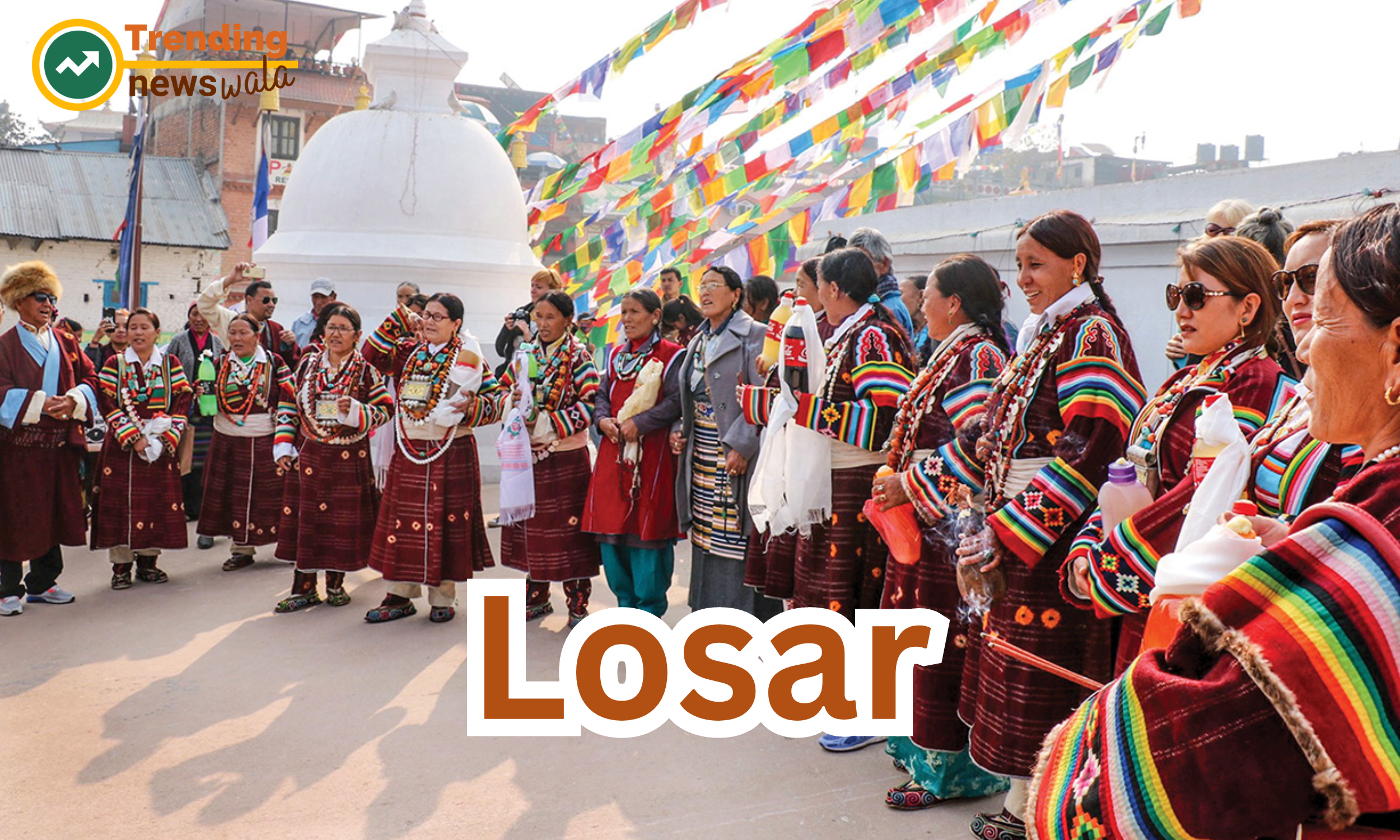
Engage in spiritual practices such as spinning prayer wheels and reciting mantras to accumulate merit and invoke blessings for the New Year. Visiting sacred sites, stupas, and monasteries to perform circumambulations (kora) and offer prayers is considered auspicious during Losar.
- Losar, the Tibetan New Year, is a time of spiritual renewal and cultural festivities, deeply rooted in Buddhist traditions. Central to Losar celebrations is the practice of spinning prayer wheels and reciting mantras, acts of devotion believed to bring blessings, purify negativity, and usher in auspicious energies for the coming year. Here, we delve into the significance and rituals surrounding spinning prayer wheels and reciting mantras during the joyous occasion of Losar:
- Spinning Prayer Wheels (Mani Wheels):Prayer wheels, or "mani wheels," are cylindrical devices containing rolls of prayers, mantras, and sacred texts. Spinning these wheels clockwise is believed to evoke the blessings and merit contained within the scriptures, spreading positive energy and dispelling negative forces.
- Symbolism of Prayer Wheels:The spinning of prayer wheels symbolizes the continuous turning of the wheel of Dharma, the teachings of the Buddha, and the perpetual flow of blessings and compassion in the universe. Each rotation is considered a powerful act of devotion and merit accumulation.
- Mantras and Their Power:Mantras, sacred sounds or phrases, hold immense power in Tibetan Buddhist tradition. Reciting mantras is believed to invoke the blessings of enlightened beings, purify negative karma, and cultivate inner peace and wisdom.
- Om Mani Padme Hum:The mantra "Om Mani Padme Hum," dedicated to Avalokiteshvara, the Bodhisattva of Compassion, is particularly revered during Losar. Spinning prayer wheels inscribed with this mantra is believed to invoke the compassionate blessings of Avalokiteshvara and cultivate loving-kindness and compassion.
- Prayer Wheel Circumambulation:Circumambulating sacred sites, temples, or prayer wheels while spinning them is a common practice during Losar festivities. This ritual is believed to magnify the merits and blessings accrued through the act of spinning the prayer wheel.
- Recitation of Mantras:Losar is an opportune time for devotees to engage in the recitation of mantras, especially the mantra of their chosen deity or Bodhisattva. The rhythmic repetition of mantras helps to focus the mind, purify negative emotions, and generate positive energy.
- Offering Butter Lamps (Butter Torches):Alongside spinning prayer wheels and reciting mantras, offering butter lamps is a sacred ritual during Losar. Lighting butter lamps symbolizes dispelling the darkness of ignorance and illuminating the path to enlightenment.
- Devotional Practices at Monasteries:Losar celebrations at monasteries are marked by elaborate rituals of devotion, including spinning prayer wheels, reciting mantras, chanting sutras, and offering prostrations. Monks and devotees come together to generate positive energy and blessings for all beings.
- Inner Transformation:The practice of spinning prayer wheels and reciting mantras during Losar is not merely an external ritual but also a path to inner transformation. Through these practices, devotees seek to cultivate compassion, wisdom, and spiritual insight.
- Universal Blessings:Spinning prayer wheels and reciting mantras during Losar is not limited to Tibetan Buddhists alone. People of diverse backgrounds and faiths participate in these sacred rituals, recognizing the universal aspirations for peace, harmony, and enlightenment.
- spinning prayer wheels and reciting mantras during Losar are sacred rituals that embody the essence of Tibetan Buddhist spirituality. These practices serve as powerful conduits for generating positive energy, purifying negativities, and cultivating inner virtues of compassion and wisdom. As devotees engage in these timeless rituals, they invoke blessings for themselves, their communities, and all sentient beings, ushering in the New Year with hope, devotion, and boundless compassion.
Foster Acts of Compassion and Generosity:
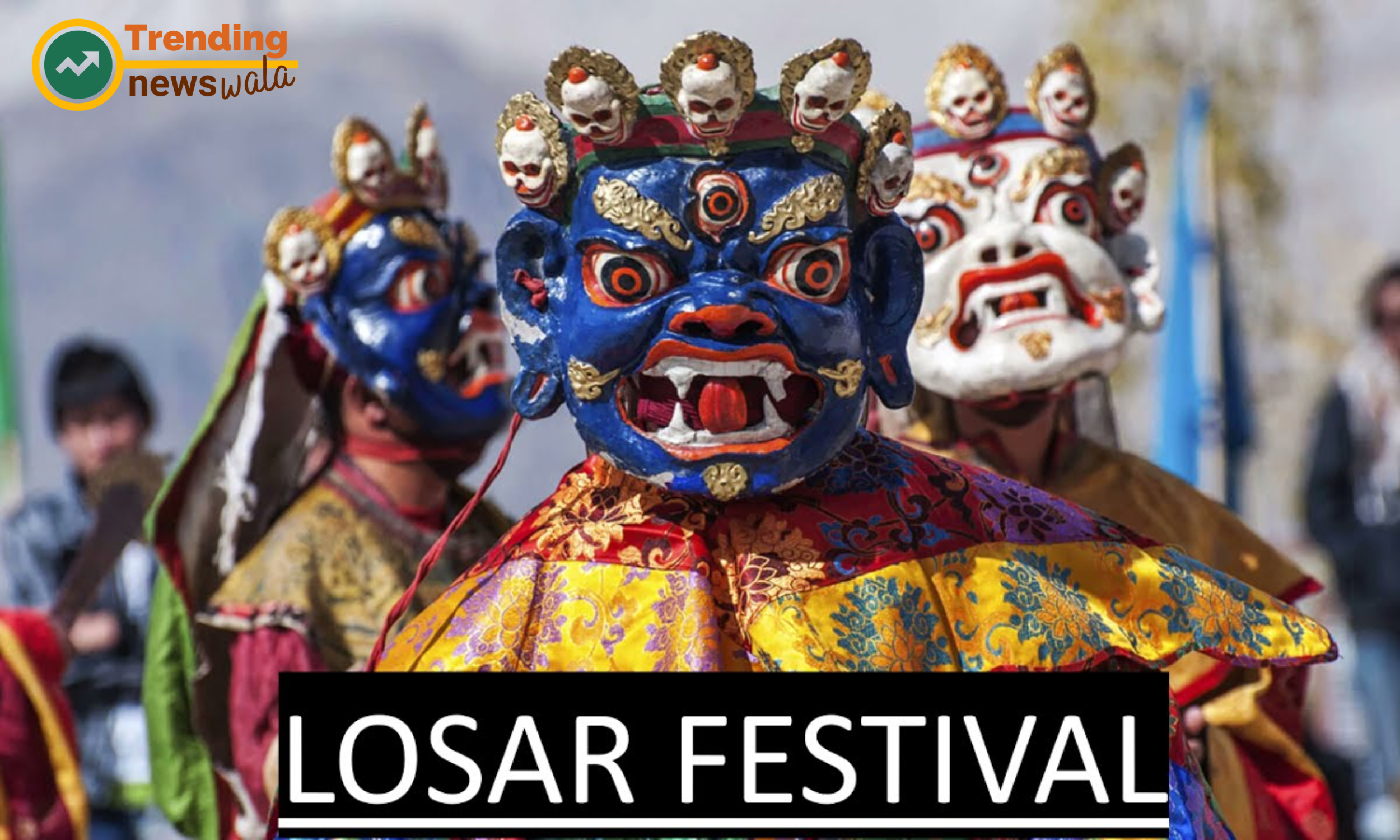
Losar is a time to cultivate virtues of compassion, generosity, and kindness towards others. Engage in acts of charity, donate to Tibetan charities, and extend support to those in need. Volunteering for community service projects and offering assistance to the elderly or disadvantaged foster a spirit of unity and goodwill.
- Losar, the Tibetan New Year, is a time of reflection, renewal, and profound acts of compassion and generosity. Rooted in Buddhist principles of loving-kindness and altruism, Losar fosters a spirit of compassion that extends to all sentient beings. Here, we explore the top ten ways in which Losar inspires acts of compassion and generosity:
- Giving to Those in Need:Losar is a time for giving to those less fortunate. Many communities organize charity drives, food donations, and clothing distributions to support individuals and families facing hardship.
- Offering Alms to Monks and Nuns:Supporting the monastic community is a cherished tradition during Losar. Devotees offer alms, including food, robes, and monetary donations, to monks and nuns as a gesture of respect and gratitude.
- Volunteering at Charitable Organizations:Losar encourages active participation in charitable organizations and community service projects. Volunteers offer their time and skills to assist the elderly, disabled, or disadvantaged members of society.
- Extending Hospitality to Guests:Hospitality plays a central role in Losar celebrations. Families welcome guests into their homes with open arms, offering food, drinks, and warm hospitality to all who visit.
- Sharing Festive Meals:Losar feasts are a time for abundance and sharing. Families invite neighbors, friends, and strangers to join them in festive meals, ensuring that no one is left hungry during the New Year celebrations.
- Offering Butter Lamps:Lighting butter lamps is a symbolic act of generosity during Losar. Devotees offer butter lamps at temples and monasteries as a gesture of devotion and to illuminate the path for all beings.
- Giving Gifts and Tokens of Appreciation:Exchanging gifts is a common practice during Losar. Whether it's offering traditional Tibetan handicrafts, sweets, or heartfelt greetings, the act of giving brings joy and strengthens bonds of friendship and community.
- Supporting Local Artisans and Craftspeople:Losar is an opportunity to support local artisans and craftspeople by purchasing handmade goods and traditional crafts. Buying locally-made products not only supports livelihoods but also preserves cultural heritage.
- Expressing Gratitude to Elders and Teachers:Losar is a time to express gratitude and reverence to elders, teachers, and spiritual mentors. Offering khataks (ceremonial scarves) and heartfelt thanks acknowledges their wisdom and guidance.
- Practicing Forgiveness and Reconciliation:Forgiveness and reconciliation are integral to the spirit of Losar. The New Year offers an opportunity to let go of past grievances, mend relationships, and start anew with compassion and understanding.
- Losar embodies the spirit of compassion and generosity, inspiring acts of kindness, hospitality, and altruism. As communities come together to celebrate the New Year, they reaffirm their commitment to the values of compassion, generosity, and solidarity, fostering a brighter and more compassionate world for all beings.
Reflect and Set Intentions for the New Year:
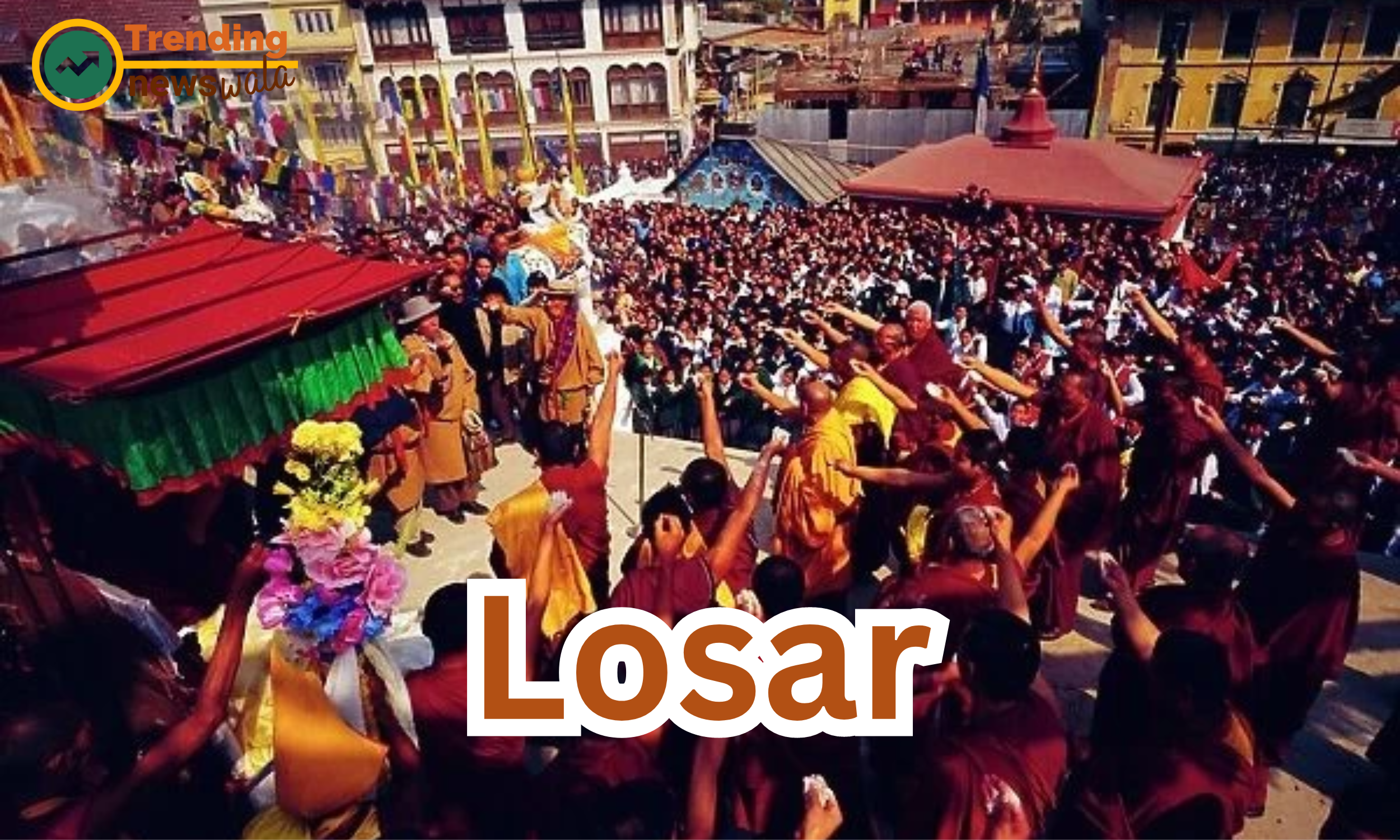
Take time for introspection, reflection, and meditation as you welcome the New Year. Set positive intentions, aspirations, and goals for personal growth and spiritual development. Use this time to deepen your practice, cultivate mindfulness, and nurture inner peace.
- Losar, the Tibetan New Year, marks a significant occasion for reflection, introspection, and setting intentions for the year ahead. Rooted in Buddhist traditions, Losar encourages individuals to pause, contemplate their past actions, and cultivate positive aspirations for the future. Here, we explore the top ten ways in which Losar invites individuals to reflect and set intentions for the New Year:
- Contemplating Impermanence:Losar prompts individuals to contemplate the impermanent nature of life and the passage of time. Reflecting on impermanence encourages a deeper appreciation for the present moment and a recognition of the transient nature of all phenomena.
- Reviewing Past Actions:Losar is an opportune time to review past actions and behaviors. Individuals reflect on their successes, challenges, and areas for growth, fostering self-awareness and personal development.
- Cultivating Gratitude:Gratitude is a central theme of Losar celebrations. Individuals express gratitude for the blessings and opportunities of the past year, acknowledging the support of friends, family, and community.
- Setting Intentions:Losar encourages individuals to set intentions or aspirations for the coming year. Whether focusing on personal growth, health, relationships, or spiritual development, setting clear intentions helps guide actions and priorities.
- Practicing Mindfulness:Mindfulness is a key practice during Losar. Individuals cultivate present-moment awareness through meditation, reflection, and mindful activities, fostering a sense of clarity and inner peace.
- Engaging in Rituals and Prayers:Rituals and prayers play a significant role in Losar celebrations. Individuals participate in sacred rituals, offer prayers for blessings and auspiciousness, and invoke the guidance of enlightened beings for the year ahead.
- Seeking Guidance from Spiritual Teachers:Losar is an occasion to seek guidance from spiritual teachers and mentors. Individuals receive teachings, advice, and blessings from revered teachers, deepening their spiritual understanding and commitment.
- Letting Go of Attachments:Losar encourages individuals to let go of attachments and grievances from the past. By releasing negative emotions and clinging to the past, individuals create space for new beginnings and growth.
- Embracing Change and Transformation:Losar celebrates the potential for change and transformation in the New Year. Individuals embrace the opportunity for personal and spiritual growth, welcoming positive shifts and evolution.
- Connecting with Community:Losar is a time for communal reflection and shared aspirations. Individuals come together with friends, family, and community members to reflect on the past year, share intentions for the future, and offer support and encouragement to one another.
- Losar serves as a poignant reminder to reflect on the past, set intentions for the future, and cultivate gratitude and mindfulness in the present moment. By embracing this tradition of reflection and intention-setting, individuals embark on the journey of the New Year with clarity, purpose, and renewed determination to live a meaningful and fulfilling life.
Embrace Interfaith Unity and Harmony:

Embrace the spirit of interfaith unity and harmony by fostering connections with people of diverse backgrounds and beliefs. Participate in interfaith dialogues, cultural exchange programs, and community-building initiatives to promote understanding, respect, and cooperation.
- Losar, the Tibetan New Year, transcends cultural boundaries and embraces the universal values of compassion, peace, and harmony. In its essence, Losar celebrates not only Tibetan Buddhist traditions but also fosters interfaith unity by embracing diversity and inclusivity. Here, we delve into the top ten ways Losar encourages the embracing of interfaith unity and harmony:
- Inclusive Celebrations:Losar celebrations welcome people of all faiths and backgrounds to participate in the festivities, fostering an inclusive environment where diversity is celebrated and respected.
- Interfaith Dialogues:Losar provides an opportunity for interfaith dialogues, where representatives from different religious traditions come together to discuss common values, share insights, and promote understanding and respect.
- Joint Prayer Services:Interfaith prayer services are organized during Losar, where individuals from diverse religious communities gather to offer prayers for peace, prosperity, and harmony in the world.
- Shared Rituals and Practices:Losar encourages the sharing of rituals and practices across faith traditions, highlighting the universal themes of renewal, gratitude, and spiritual awakening that resonate with people of all beliefs.
- Collaborative Community Service:Losar inspires collaborative community service projects involving members of various faith communities. Volunteers work together to address social issues, alleviate poverty, and promote the well-being of all members of society.
- Interfaith Cultural Performances:Cultural performances featuring music, dance, and art from different religious traditions are showcased during Losar celebrations, promoting mutual appreciation and understanding of diverse cultural heritages.
- Joint Humanitarian Efforts:Losar serves as a platform for joint humanitarian efforts, where individuals and organizations from different faiths come together to provide relief to disaster-stricken areas, support refugees, and alleviate suffering.
- Interfaith Peacebuilding Initiatives:Losar fosters interfaith peacebuilding initiatives aimed at promoting dialogue, reconciliation, and conflict resolution in areas affected by religious tensions or conflicts.
- Ecumenical Services:Ecumenical services, bringing together representatives from various Christian denominations, are organized during Losar, emphasizing the shared values of love, compassion, and service to humanity.
- Promoting Environmental Stewardship:Losar encourages interfaith efforts to promote environmental stewardship and sustainability, recognizing the importance of protecting the planet for future generations regardless of religious affiliations.
- Losar exemplifies the spirit of interfaith unity and harmony by fostering dialogue, collaboration, and mutual respect among people of different religious backgrounds. Through shared celebrations, joint service projects, and interfaith dialogues, Losar serves as a beacon of hope, promoting a world where diverse faith traditions coexist in peace and harmony.

What is Losar?
Losar, meaning "New Year" in Tibetan, is the traditional Tibetan New Year festival celebrated by Tibetan Buddhists and communities in Tibet, Bhutan, Nepal, and other regions with Tibetan cultural influence.
When is Losar celebrated?
Losar falls on the first day of the lunisolar Tibetan calendar, usually in February or March, depending on the lunar cycle. The celebration typically lasts for several days, with preparations beginning in advance.
What are the main traditions associated with Losar?
Losar is marked by various rituals, including the cleaning and decorating of homes, making offerings at temples, spinning prayer wheels, reciting mantras, visiting monasteries, and enjoying festive meals with family and friends.
What is the significance of Losar?
Losar carries deep spiritual and cultural significance, symbolizing the renewal of life, the opportunity for spiritual growth, and the cultivation of positive aspirations for the coming year. It is a time for reflection, gratitude, and rejoicing.
How do people celebrate Losar?
Losar celebrations vary across regions but commonly include religious ceremonies, cultural performances, traditional dances, feasting, exchanging gifts, and participating in community events. It is a time for families to come together and strengthen bonds.
What are some traditional Losar foods?
Traditional Losar foods vary by region but may include dishes such as Guthuk (a Tibetan noodle soup), Khapse (fried cookies), Momos (dumplings), Butter Tea, and various sweet treats made from barley flour, butter, and sugar.
Is Losar only celebrated by Tibetan Buddhists?
While Losar is deeply rooted in Tibetan Buddhist tradition, it is also celebrated by communities influenced by Tibetan culture, including Bon practitioners, as well as in regions like Ladakh, Sikkim, and Arunachal Pradesh in India.
How can one participate in Losar celebrations?
Visitors interested in experiencing Losar celebrations can join festivities at Tibetan Buddhist temples, monasteries, or cultural centers, where they can observe rituals, enjoy cultural performances, and partake in traditional meals.
What is the significance of Losar in the Tibetan calendar?
Losar marks the beginning of the Tibetan calendar year and is a time for spiritual purification, making offerings to deities, and seeking blessings for the year ahead. It also holds historical and cultural significance as a marker of Tibetan identity.
Are there any specific customs associated with Losar that travelers should be aware of?
Travelers participating in Losar celebrations should be mindful of local customs and traditions, such as offering kata scarves when greeting elders or participating in temple rituals with respect and reverence.

